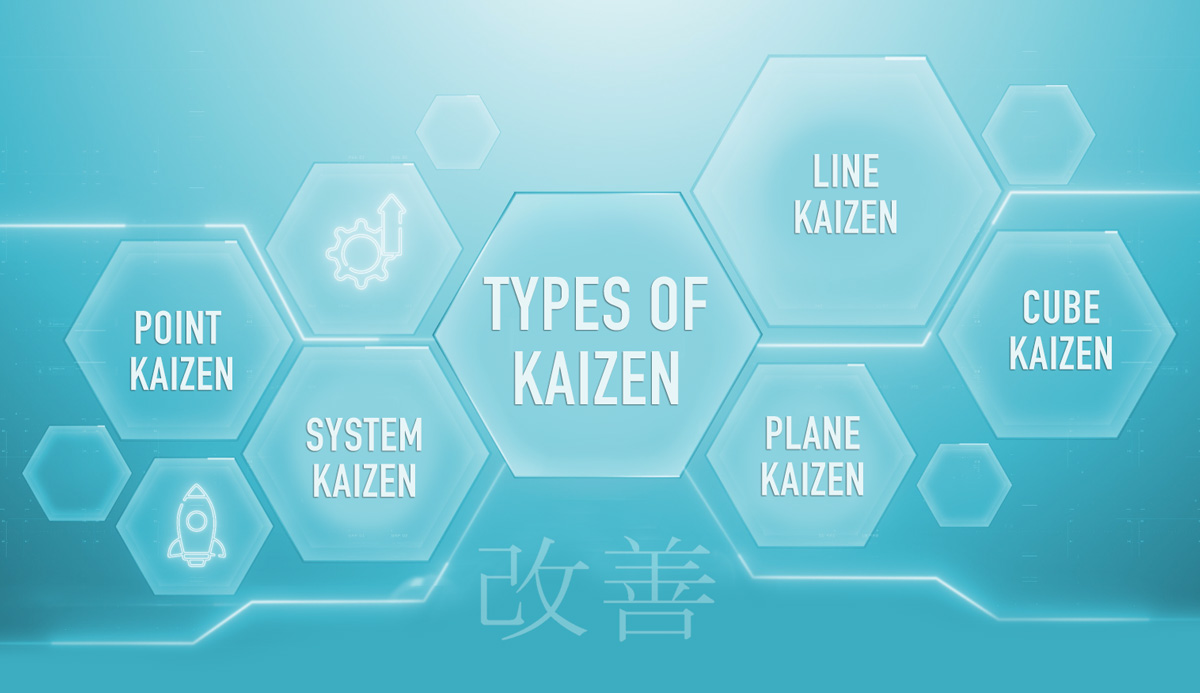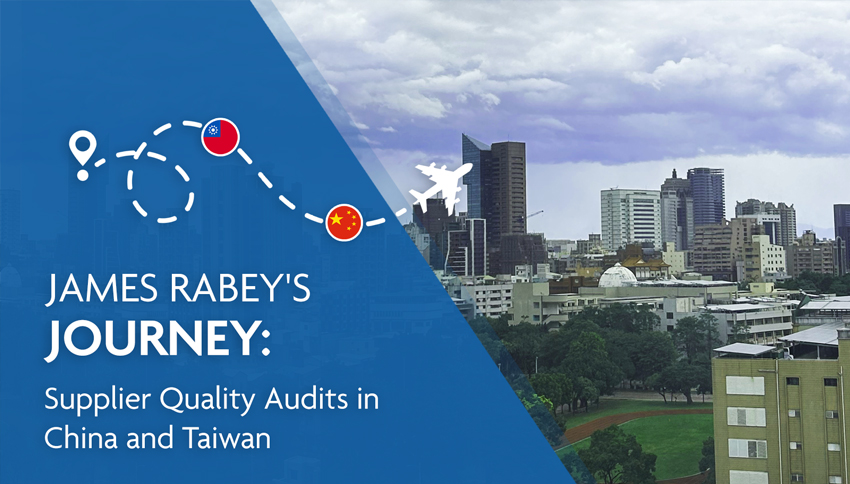Here’s what we’ll cover:
What is Kaizen
Kaizen’s Five Elements
Feedback Regarding Improvement
Types of Kaizen
5S: Unveiling The Mystery
Conclusion
In the world of manufacturing, Kaizen has its eminent prominence. We can call it a business philosophy that involves everyone from multiple organizations putting in maximum effort to improvise things at every stage.
What is Kaizen?
Do you know Kaizen is a Japanese word for continuous improvement? “Kai” stands for change, and “Zen” means for the better. Interesting right. The term sounds like a method, but it is a mindset that synchronizes with specific techniques and methods of the PDCA cycle and 5S.
Kaizen’s Five Elements
Kaizen consists of five elements. They are as follows:
Personal Discipline
Kaizen places heavy emphasis on the personal discipline of all employees. They should be responsible for carrying out their duties, punctual in showing up in their workplaces, attentive towards work, and a diligent approach.
Teamwork
All the employees working for an organization, regardless of their position, be it a shop floor operator or the company’s CEO, should share a mindset hungry for constant progress and improvement.
Boost Morale
Employees must never lack morale at their workplace. The management’s efforts in making their workers also play a vital role. They should ensure that their venture’s environment is the correct place for the employees to be happy. It must have the facilities needed to encourage them to work daily. Management should not burden them with workload and, from time to time, acknowledge the efforts they have put in for the company.
Circle of Quality
A Circle of Quality means when a group of employees sit together to exchange ideas and share opinions to improve the firm. All the workers need to be involved in this matter, irrespective of whether they are on the front line or the leadership staff. No one should be left behind, as everyone is an equal part of the company.
Feedback Regarding Improvement
Every company should have a system allowing employees to share valuable feedback regarding workplace improvement. It can be an idea of how the management can implement it to improve the atmosphere. Circulate a digital form in the office and ensure everyone pens down their feedback.
Whatever ideas the in-charge receives should be forwarded to the upper management to review and act on it. Otherwise, the laborers will feel discouraged that the authority was not serious and did not pay attention in any way.

Types of Kaizen
Let’s take our manufacturing vehicle ahead and talk about the different types of Kaizen in the industry. They are as mentioned below:
Point Kaizen
The Kaizen happens spontaneously, on the spot, and without absolute preparation. Suppose the operators come across any breakdown, deviation, or other issue. In that case, immediate measures are taken to fix it so the fault doesn’t hinder anyone’s workflow. The activities of Point Kaizen can have a prominent impact on shop floor performance with time.
System Kaizen
The name only suggests that it comes forward with everything being organized. Therefore, System Kaizen means planned events and focuses on strategic and systematic problems within an entity.
Line Kaizen
It connects departments involved downstream and upstream of a procedure. For instance, if the downstream procurement department arranges a Kaizen event, the planning department, which will be upstream, must be included to execute things seamlessly.
Plane Kaizen
This type changes the Line Kaizen department into sort of value streams. The Plane Kaizen provides a complete overview of the steps taken in effect to complete the product’s manufacturing. The value stream permits amendments to one line applied to all the other lines that create the plane.
Cube Kaizen
Last is Cube Kaizen. How is it different from the other types described above? Well, the Cube links all the planes with each other and brings about an organization that is wholly saturated according to the Kaizen mentality. As far as improvements are concerned, they can be made anywhere. Be it downstream, upstream, and other angles of logistics and suppliers.
5S: Unveiling The Mystery
You must have read about the 5S if not we are here to tell you. . Does that increase your curiosity about what we are about to will tell you?
The wait is over as the article is revealingthe mystery behind 5S. Yes, the 5S is a method in Kaizen philosophy revolving around manufacturing and tidying workplace activities. The principles begin with the letter S in both English and Japanese.
They are as follows:
Seiri = Sort
Seiri is responsible for looking after the necessary tools, equipment, and materials in the concerned area and evaluates accordingly what to keep and what to store somewhere else, probably a store room. The people working in that area must be involved to figure out this sorting. Every item will pass through its share of scrutiny: what is the use of the item, how frequently is it used, who often uses it, and eventually if it has to be kept in that area or can be kept elsewhere?
Seition=Order
After going through an in-depth Seiri, the remaining items can be easily stored and aligned. It is human nature to keep things closer in their proximity, which you use daily to deliver the tasks. The equipment can be ordered according to color code, so no time gets wasted searching it again.
Seiso=Shine
Who is in favor of a messy workplace? Noone! In the peak production hours, the focus will be on work instead of grabbing a mop to clean. The clean, corporate platform doesn’t give good and positive vibes but also enhances employee safety. The element looks after the maintenance of the machines that function on a regular basis and prevents the automation from breaking down, resulting in better performance.
Seiketsu=Standardize
On a holiday, you are triggered by a sudden urge to clean every inch of your apartment. The same applies to making the shop’s floor spick and span. Such activities should be made a part of your standardized lifestyle. This way, your floor will always be shiny and not dirty.
Shitsuke=Sustain
Sustainability is critical. This step ensures that the responsible person continues to pay attention to all the other steps above. Consistency will boost the overall performance. With this, we wrap up the article and hope you understand the unique concept of Kaizen in manufacturing.
Did You Know?
For more than forty years Mechanical Power has been supplying high-quality bearing at competitive prices from around the world. We are best known for sourcing the highest-quality industrial parts at competitive prices from around the world.
Maximize efficiency of your equipment.
Conclusion
In conclusion, the essence of Kaizen lies in its commitment to continuous improvement and inclusivity, cutting across all levels of an organization. Through the integration of personal discipline, teamwork, morale enhancement, quality circles, and feedback systems, Kaizen fosters a culture of perpetual growth and efficiency.
The diversity of Kaizen types—Point, System, Line, Plane, Cube—alongside the 5S methodology, underscores a comprehensive approach to refining manufacturing processes, promoting workplace organization, and elevating employee engagement.
This philosophy not only improves operational performance but also cultivates a dynamic environment where innovation thrives.
Adopting Kaizen principles offers a pathway to sustainable development, operational excellence, and a competitive edge in the manufacturing sector. Let us embrace Kaizen as a mindset for excellence and continuous advancement.

Resourceful and innovative Marketing Pro, with 20+ years of progressive experience in the marketing and creative technology industry. Responsible for digital and traditional marketing efforts that promotes brand awareness, increases engagement, and drives revenue.

















